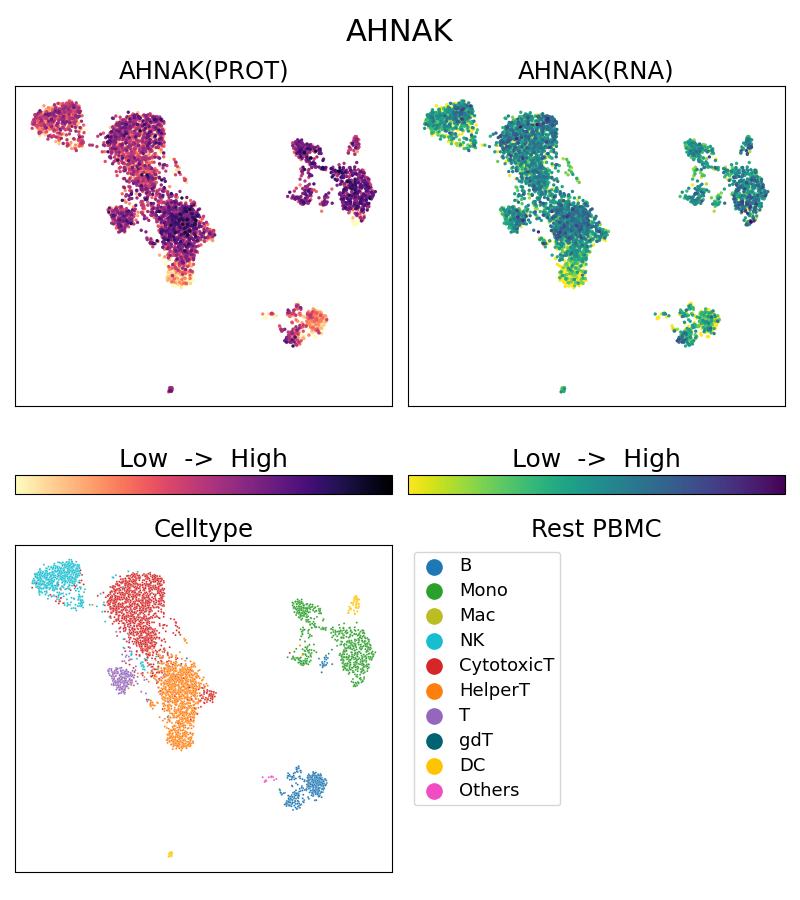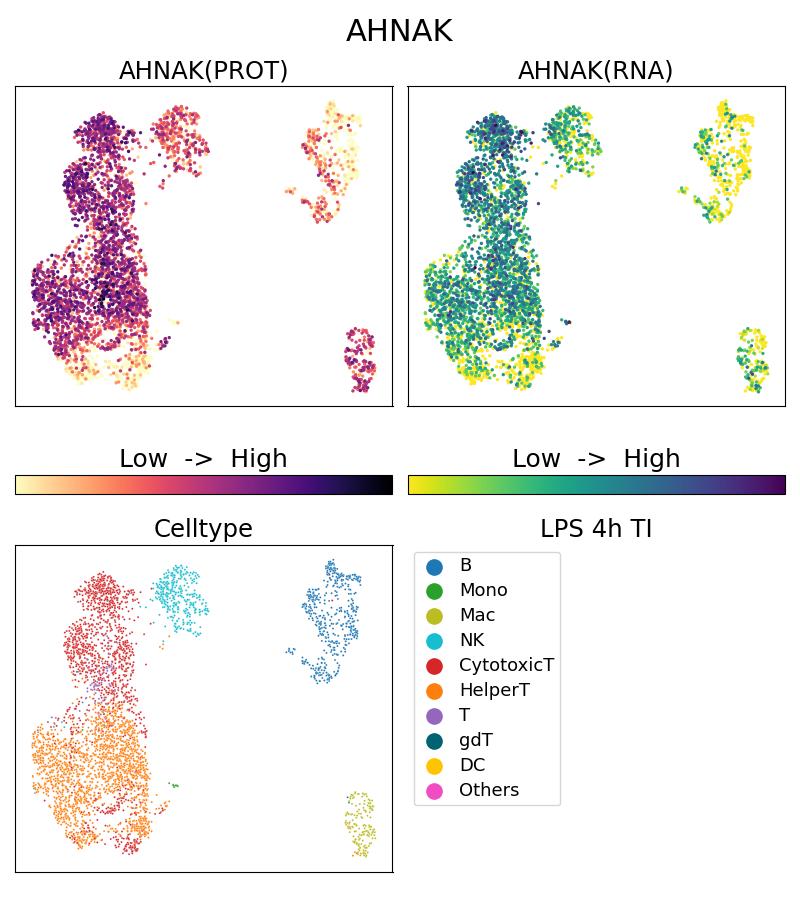AHNAK Polyklonaler Antikörper
AHNAK Polyklonal Antikörper für Single Cell (Intra)
Wirt / Isotyp
Kaninchen / IgG
Getestete Reaktivität
human
Anwendung
Single Cell (Intra)
Konjugation
5CFLX Fluorescent Dye
Kat-Nr. : G16637-1-5C
Synonyme
Geprüfte Anwendungen
| Erfolgreiche Detektion in Single Cell (Intra) | 10x Genomics Gene Expression Flex with Feature Barcodes and Multiplexing product |
Empfohlene Verdünnung
| Anwendung | Verdünnung |
|---|---|
| SINGLE CELL (INTRA) | SINGLE CELL (INTRA) : <0.5ug/test |
| It is recommended that this reagent should be titrated in each testing system to obtain optimal results. | |
| Sample-dependent, check data in validation data gallery | |
Produktinformation
G16637-1-5C bindet in Single Cell (Intra) AHNAK und zeigt Reaktivität mit human
| Getestete Reaktivität | human |
| Wirt / Isotyp | Kaninchen / IgG |
| Klonalität | Polyklonal |
| Typ | Antikörper |
| Immunogen | AHNAK fusion protein Ag9986 |
| Vollständiger Name | AHNAK nucleoprotein |
| Berechnetes Molekulargewicht | 629 kDa |
| GenBank-Zugangsnummer | BC000926 |
| Gene symbol | AHNAK |
| Gene ID (NCBI) | 79026 |
| Konjugation | 5CFLX Fluorescent Dye |
| Form | Liquid |
| Reinigungsmethode | |
| Lagerungspuffer | PBS with 1mM EDTA and 0.09% sodium azide |
| Lagerungsbedingungen | 2-8°C Stable for one year after shipment. 20ul Größen enthalten 0,1% BSA. |
Hintergrundinformationen
AHNAK, also known as desmoyokin, is described as a giant scaffold protein based on its large size (629 kDa) and ability to interact with different proteins to form multi-protein complexes. The bulk of the protein is assembled in 128-residue repetitive elements known as the central repeated unit (CRU). Its proposed functions are quite diverse, ranging from a role in the formation of the blood brain barrier, in cell architecture and migration, to the regulation of cardiac channels and muscle membrane repair. AHNAK is differentially expressed in some cancer cell lines. The expression of AHNAK is subsequently localized to the plasma membrane of keratinocytes in human epidermis. AHNAK has been reported in many intracellular locations including the nucleus, cytoplasm and plasma membrane.



